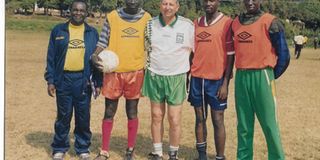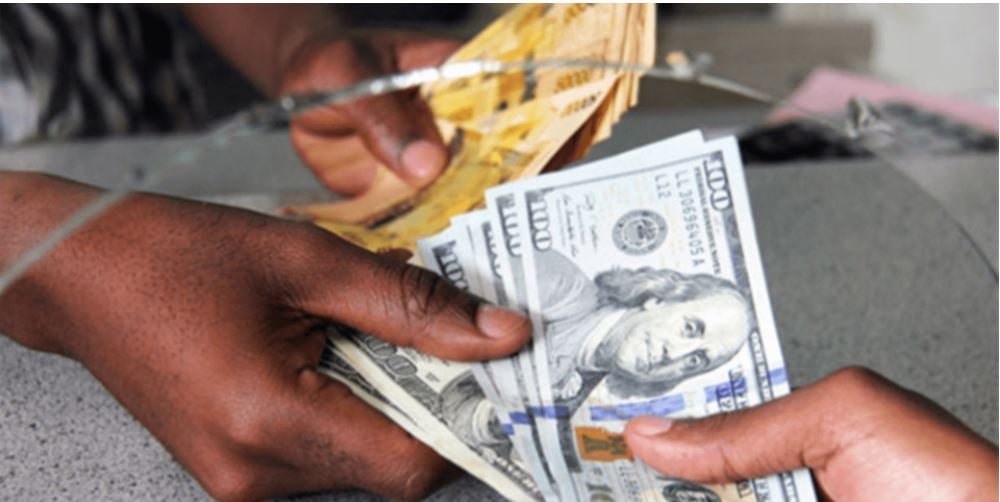Prime
Seminary life: More than prayers

What you need to know:
Golden jubilee. Ggaba seminary celebrated 50 years yesterday. The institution has trained prominent clergymen and, Robert Mugagga looks at the history through the years
November 12, marks an important day in the history of the Catholic Church in Uganda. The delayed celebrations to mark 50 years of St Mary’s National Seminary Ggaba were after all held at the seminary.
The seminary turned 50 in 2020 but the occasion could not be celebrated due to the Covid-19 pandemic. As a major seminary offering Philosophy and Theology, Ggaba is much older than 50 years having started in 1930. Before the unification of the early Christian missionaries that introduced Christianity to Uganda, congregations such as the White Fathers, Mill Hill, Comboni and Verona fathers occupied different parts of the country where apart from preaching the gospel, they set up schools and hospitals. To train indigenous priests that would in future succeed them, the missionaries set up seminaries.
On their part, the English-speaking Mill Hill Fathers from England who mainly occupied the eastern part of the country from their headquarters in Nsambya put up a major seminary at Ggaba on the Kampala outskirts.
There, seminarians from all over the vicariate would study Philosophy and Theology prior to being ordained.
The Mill Hill Fathers’ Nsambya diocese stretched far East and administered some parts of western Kenya. Little wonder, the former Archbishop of Nairobi, Maurice Cardinal Otunga (currently referred to as “servant of God”, the first step on the way to canonisation) joined Ggaba before proceeding to the Pontifical Urban University in Rome in 1947. Many other Ugandans studied there at the time, including the former Archbishop of Tororo Denis Kiwanuka Lote (RIP) who was later ordained a priest in 1965.
The White Fathers too had their own major seminary at Katigondo in Masaka where seminarians in their vicariate would enroll.
For instance, this was where the bishop emeritus Matthias Ssekamaanya of Lugazi Diocese went in 1959 for seven years before being ordained priest at Lubaga in 1965.
The rivalry between the White Fathers and Mill Hill Fathers even divided their flock that believers would be asked where they belonged: Rubaga or Nsambya? Wafaransa ama Wangereza?
Ggaba is born
In 1966, Rome ordered the merger of Rubaga Diocese of the White Fathers and Nsambya Diocese of the Mill Hill Fathers and this marked the creation of Kampala Archdiocese. In a similar development, all major seminaries in the country came under one roof and the administration of what later came to be known as the Uganda Episcopal Conference. Seminarians in Uganda had to go to Katigondo in Masaka for philosophical studies before ending up at Ggaba for theology just before being ordained. This was when Ggaba came to be known as National Major Seminary.
Fifty years down the road, the seminary has nurtured hundreds of priests, some of whom have become bishops.
Archbishop John Baptist Odama and Cyprian Kizito Lwanga (RIP) were the first bishops from Ggaba in 1996.
Home of leaders
Other bishops St Mary’s National Major Seminary has produced include Joseph Anthony Zziwa (Kiyinda-Mityana), Serverus Jjumba (Masaka), Callistus Rubaramira (Kabale) , Lambert Bainomugisha (Mbarara) , Francis Kibira (Kasese) , Charles Martin Wamika (Jinja), Vincent Kirabo (Hoima), Sabino Ocan Odoki (Arua), Sanctus Lino Wanok (Lira).
Then, there are Ugandan bishops who missed going to Ggaba for various reasons such as having attended missionary seminaries or completing their priesthood studies in Europe and North America. The likes of Tororo archbishop Emmanuel Obbo (Apostles of Jesus), Raphael Wokorach of Nebbi Diocese (Comboni) while Robert Muhiirwa of Fort Portal completed seminary studies in Rome and was ordained priest by St John Paul II in 1985.
Today at Ggaba, seminarians study, among others an internal theology diploma, then, Bachelor of Theology of Urbanian University Rome and some, a Master of Arts in Religious Studies of Makerere University. The seminary’s current rector is Rev Fr Lazarus Luyinda.
Others that have steered the wheel before him include late Msgr Alex Mukasa, Lugazi bishop emeritus Matthias Ssekamanya, and Mbarara Archbishop emeritus, Paul K Bakyenga.

Adraa says he could not believe that football had made him his priesthood dream. PHOTO/Robert Mugagga
The sporty side of Ggaba
For the last 50 years, all has not been about praying at Ggaba. Seminarians have engaged in sports as well. During the 1970s, Ggaba was popular for producing great footballers some of whom were spotted by big clubs and ended up featuring in the national league. For instance, Leo Adraa, one of Uganda’s leading footballers of all time studied Theology at Ggaba then in 1973 from Katigondo National Major Seminary, with classmates such as late Msgr Joseph Obunga. At Ggaba, he was a year ahead of Cyprian Kizito Lwanga and below Kampala Archdiocese vicar general Msgr Gerald Kalumba.
It was at the institution that Adraa’s football talent reached climax and, because good footballers were accorded an opportunity to train and play for Nsambya FC, one of Uganda’s oldest clubs started by Catholic missionaries in 1911. It took little time for the club to realise that seminarians such as Adraa and Alphonse Mukanga were already accomplished footballers that would make their team more formidable.
The two were signed and started playing for Nsambya FC in the Second Division and later helped they win promotion to the Ugandan Premier League. After joining Nsambya FC in 1973, as the lead striker, Adraa helped the club win promotion to Uganda’s premier league in 1975 and scored vital goals that saw them defeat KCCA FC and earn two draws against giant clubs of the time, Simba FC and Express FC.
Later, Adraa realised that it would be difficult to balance studies and football and thought of dropping one of the two. When he apprached the patron of Nsambya FC, who doubled as chairman East African Examination Council Basil Kiwanuka, he was advised to leave the seminary rather than kill his talent that would benefit the country.
“Why don’t you leave the seminary and I get you a job at the East African Examination Council. This will enable you to earn two salaries rather than being forced to abandon your immense football talent,” Kiwanuka advised.
Adraa took time off to reflect on the matter before accepting the offer.
“The following week, I surprised the seminary staff and fellow seminarians when I packed my bags and told them I was leaving. I could not believe that football had finally made me abandon my priesthood dream,” he says.
He listened to his heart and concluded that people can serve God in different ways and not only as priests.
Adraa got a house and immediately started out at his new job and continued playing football for Nsambya FC.
During his career, Adraa proved such a successful footballer by being called to the Cranes team in 1974 while playing for Nsambya in the league’s second division. He was so instrumental that he featured in the 1976 Afcon tournament in Ethiopia, besides winning the 1976 and 1977 Cecafa titles.
In Ugandan football, he was nicknamed Ugandan Bomber for unleashing fierce shots that used to scare goalkeepers
At club level, Adraa helped Nsambya FC clinch the 1978 Uganda Cup. Thereafter, they represented Uganda in the 1979 Africa Cup Winners’ Cup football club tournament. After hanging up his boots in 1986, he became a football coach and at one time coached Uganda Cranes (2003-2004), Uganda under 20 national youth team and Uganda Kobs at the 1999 All African Games in South Africa. Adraa has coached among other clubs, Express FC, Nsambya FC, Scoul, Arua Young, Boroboro, Kinyara and Gulu United.
Another remarkable footballer at Ggaba was Serverus Jjumba who is currently the bishop of Masaka Diocese. Football almost claimed another casualty until a serious injury kept him away from seminary studies and feared that he would be discontinued. Jjumba joined Ggaba in 1988 from Katigondo with classmates that included Lambert Bainomugisha, now Mbarara Archbishop. Just like at Bukalasa and Katigondo seminaries he attended earlier, he had proved to be a prolific striker.

Leo Adraa in his cassock at Ggaba Seminary. PHOTO/Robert Mugagga
During one match, a seminarian plotted to stop him by injuring him, resulting in the fracture of one of his legs. He lost a year while undergoing treatment and later returned to Ggaba with a crutch. Perhaps this explains why he was ordained priest in 1992 yet his previous classmates such as Bainomugisha made it earlier on in 1991.
After healing, Jjumba avoided taking chances and never played football again.
Nurtured
Another remarkable footballer at Ggaba was Serverus Jjumba, currently the bishop of Masaka Diocese. Football almost claimed another casualty until a serious injury kept him away from seminary studies and feared that he would be discontinued. Jjumba joined Ggaba in 1988 from Katigondo with classmates that included Lambert Bainomugisha, now Mbarara Archbishop. Just like at Bukalasa and Katigondo seminaries he attended earlier, he had proved to be a prolific striker. During one match, a seminarian plotted to stop him by seriously injuring him resulting in fracturing one of his legs. He underwent treatment for a year.




